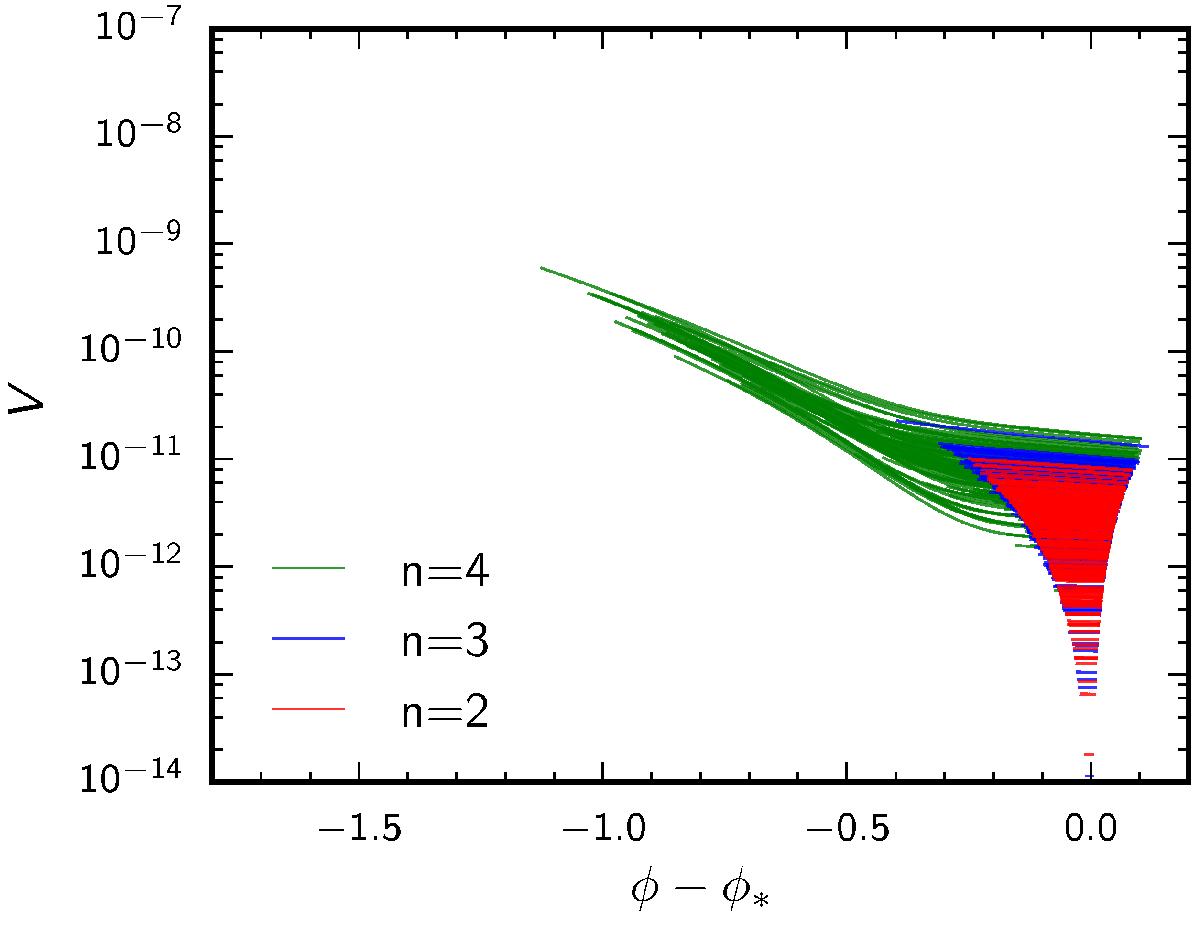Fig. 15

Observable range of the best-fit inflaton potentials, when V(φ) is Taylor expanded to the nth order around the pivot value φ∗ in natural units (where ![]() assuming a flat prior on ϵV, ηV,
assuming a flat prior on ϵV, ηV, ![]() , and
, and ![]() and using Planck TT+lowP+BAO. Potentials obtained under the transformation (φ−φ∗) → (φ∗−φ) leave the same observable signature and are also allowed. The sparsity of potentials with a small V0 = V(φ∗) is due to our use of a flat prior on ϵV rather than on ln(V0); in fact, V0 is unbounded from below in the n = 2 and 3 results. The axis ranges are identical to those in Fig. 20, to make the comparison easier.
and using Planck TT+lowP+BAO. Potentials obtained under the transformation (φ−φ∗) → (φ∗−φ) leave the same observable signature and are also allowed. The sparsity of potentials with a small V0 = V(φ∗) is due to our use of a flat prior on ϵV rather than on ln(V0); in fact, V0 is unbounded from below in the n = 2 and 3 results. The axis ranges are identical to those in Fig. 20, to make the comparison easier.
Current usage metrics show cumulative count of Article Views (full-text article views including HTML views, PDF and ePub downloads, according to the available data) and Abstracts Views on Vision4Press platform.
Data correspond to usage on the plateform after 2015. The current usage metrics is available 48-96 hours after online publication and is updated daily on week days.
Initial download of the metrics may take a while.


